Freddie Mac 2009 Annual Report Download - page 6
Download and view the complete annual report
Please find page 6 of the 2009 Freddie Mac annual report below. You can navigate through the pages in the report by either clicking on the pages listed below, or by using the keyword search tool below to find specific information within the annual report.-
 1
1 -
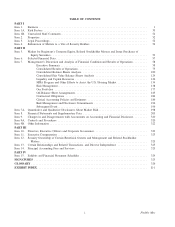 2
2 -
 3
3 -
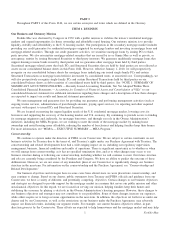 4
4 -
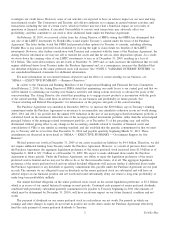 5
5 -
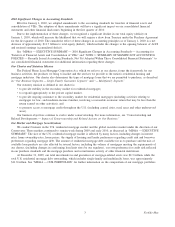 6
6 -
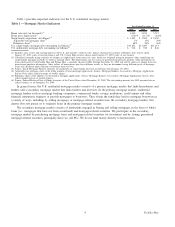 7
7 -
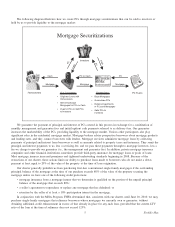 8
8 -
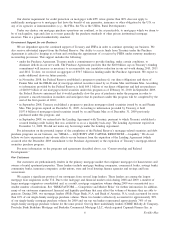 9
9 -
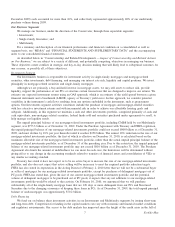 10
10 -
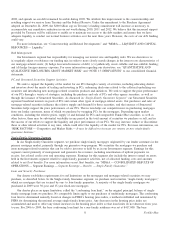 11
11 -
 12
12 -
 13
13 -
 14
14 -
 15
15 -
 16
16 -
 17
17 -
 18
18 -
 19
19 -
 20
20 -
 21
21 -
 22
22 -
 23
23 -
 24
24 -
 25
25 -
 26
26 -
 27
27 -
 28
28 -
 29
29 -
 30
30 -
 31
31 -
 32
32 -
 33
33 -
 34
34 -
 35
35 -
 36
36 -
 37
37 -
 38
38 -
 39
39 -
 40
40 -
 41
41 -
 42
42 -
 43
43 -
 44
44 -
 45
45 -
 46
46 -
 47
47 -
 48
48 -
 49
49 -
 50
50 -
 51
51 -
 52
52 -
 53
53 -
 54
54 -
 55
55 -
 56
56 -
 57
57 -
 58
58 -
 59
59 -
 60
60 -
 61
61 -
 62
62 -
 63
63 -
 64
64 -
 65
65 -
 66
66 -
 67
67 -
 68
68 -
 69
69 -
 70
70 -
 71
71 -
 72
72 -
 73
73 -
 74
74 -
 75
75 -
 76
76 -
 77
77 -
 78
78 -
 79
79 -
 80
80 -
 81
81 -
 82
82 -
 83
83 -
 84
84 -
 85
85 -
 86
86 -
 87
87 -
 88
88 -
 89
89 -
 90
90 -
 91
91 -
 92
92 -
 93
93 -
 94
94 -
 95
95 -
 96
96 -
 97
97 -
 98
98 -
 99
99 -
 100
100 -
 101
101 -
 102
102 -
 103
103 -
 104
104 -
 105
105 -
 106
106 -
 107
107 -
 108
108 -
 109
109 -
 110
110 -
 111
111 -
 112
112 -
 113
113 -
 114
114 -
 115
115 -
 116
116 -
 117
117 -
 118
118 -
 119
119 -
 120
120 -
 121
121 -
 122
122 -
 123
123 -
 124
124 -
 125
125 -
 126
126 -
 127
127 -
 128
128 -
 129
129 -
 130
130 -
 131
131 -
 132
132 -
 133
133 -
 134
134 -
 135
135 -
 136
136 -
 137
137 -
 138
138 -
 139
139 -
 140
140 -
 141
141 -
 142
142 -
 143
143 -
 144
144 -
 145
145 -
 146
146 -
 147
147 -
 148
148 -
 149
149 -
 150
150 -
 151
151 -
 152
152 -
 153
153 -
 154
154 -
 155
155 -
 156
156 -
 157
157 -
 158
158 -
 159
159 -
 160
160 -
 161
161 -
 162
162 -
 163
163 -
 164
164 -
 165
165 -
 166
166 -
 167
167 -
 168
168 -
 169
169 -
 170
170 -
 171
171 -
 172
172 -
 173
173 -
 174
174 -
 175
175 -
 176
176 -
 177
177 -
 178
178 -
 179
179 -
 180
180 -
 181
181 -
 182
182 -
 183
183 -
 184
184 -
 185
185 -
 186
186 -
 187
187 -
 188
188 -
 189
189 -
 190
190 -
 191
191 -
 192
192 -
 193
193 -
 194
194 -
 195
195 -
 196
196 -
 197
197 -
 198
198 -
 199
199 -
 200
200 -
 201
201 -
 202
202 -
 203
203 -
 204
204 -
 205
205 -
 206
206 -
 207
207 -
 208
208 -
 209
209 -
 210
210 -
 211
211 -
 212
212 -
 213
213 -
 214
214 -
 215
215 -
 216
216 -
 217
217 -
 218
218 -
 219
219 -
 220
220 -
 221
221 -
 222
222 -
 223
223 -
 224
224 -
 225
225 -
 226
226 -
 227
227 -
 228
228 -
 229
229 -
 230
230 -
 231
231 -
 232
232 -
 233
233 -
 234
234 -
 235
235 -
 236
236 -
 237
237 -
 238
238 -
 239
239 -
 240
240 -
 241
241 -
 242
242 -
 243
243 -
 244
244 -
 245
245 -
 246
246 -
 247
247 -
 248
248 -
 249
249 -
 250
250 -
 251
251 -
 252
252 -
 253
253 -
 254
254 -
 255
255 -
 256
256 -
 257
257 -
 258
258 -
 259
259 -
 260
260 -
 261
261 -
 262
262 -
 263
263 -
 264
264 -
 265
265 -
 266
266 -
 267
267 -
 268
268 -
 269
269 -
 270
270 -
 271
271 -
 272
272 -
 273
273 -
 274
274 -
 275
275 -
 276
276 -
 277
277 -
 278
278 -
 279
279 -
 280
280 -
 281
281 -
 282
282 -
 283
283 -
 284
284 -
 285
285 -
 286
286 -
 287
287 -
 288
288 -
 289
289 -
 290
290 -
 291
291 -
 292
292 -
 293
293 -
 294
294 -
 295
295 -
 296
296 -
 297
297 -
 298
298 -
 299
299 -
 300
300 -
 301
301 -
 302
302 -
 303
303 -
 304
304 -
 305
305 -
 306
306 -
 307
307 -
 308
308 -
 309
309 -
 310
310 -
 311
311 -
 312
312 -
 313
313 -
 314
314 -
 315
315 -
 316
316 -
 317
317 -
 318
318 -
 319
319 -
 320
320 -
 321
321 -
 322
322 -
 323
323 -
 324
324 -
 325
325 -
 326
326 -
 327
327 -
 328
328 -
 329
329 -
 330
330 -
 331
331 -
 332
332 -
 333
333 -
 334
334 -
 335
335 -
 336
336 -
 337
337 -
 338
338 -
 339
339 -
 340
340 -
 341
341 -
 342
342 -
 343
343 -
 344
344 -
 345
345 -
 346
346 -
 347
347
 |
 |
2010 Significant Changes in Accounting Standards
Effective January 1, 2010, we adopted amendments to the accounting standards for transfers of financial assets and
consolidation of VIEs. The adoption of these amendments will have a significant impact on our consolidated financial
statements and other financial disclosures beginning in the first quarter of 2010.
Due to the implementation of these changes, we recognized a significant decline in our total equity (deficit) on
January 1, 2010, which will increase the likelihood that we will require a draw from Treasury under the Purchase Agreement
for the first quarter of 2010. The cumulative effect of these changes in accounting principles as of January 1, 2010 is a net
decrease of approximately $11.7 billion to total equity (deficit), which includes the changes to the opening balances of AOCI
and retained earnings (accumulated deficit).
See “MD&A — EXECUTIVE SUMMARY — 2010 Significant Changes in Accounting Standards — Accounting for
Transfers of Financial Assets and Consolidation of VIEs” and “NOTE 1: SUMMARY OF SIGNIFICANT ACCOUNTING
POLICIES — Recently Issued Accounting Standards, Not Yet Adopted Within These Consolidated Financial Statements” to
our consolidated financial statements for additional information regarding these changes.
Our Charter and Statutory Mission
The Federal Home Loan Mortgage Corporation Act, which we refer to as our charter, forms the framework for our
business activities, the products we bring to market and the services we provide to the nation’s residential housing and
mortgage industries. Our charter also determines the types of mortgage loans that we are permitted to purchase, as described
in “Our Business Segments — Single-Family Guarantee Segment” and “— Multifamily Segment.”
Our statutory mission as defined in our charter is:
• to provide stability in the secondary market for residential mortgages;
• to respond appropriately to the private capital market;
• to provide ongoing assistance to the secondary market for residential mortgages (including activities relating to
mortgages for low- and moderate-income families, involving a reasonable economic return that may be less than the
return earned on other activities); and
• to promote access to mortgage credit throughout the U.S. (including central cities, rural areas and other underserved
areas).
Our business objectives continue to evolve under conservatorship. For more information, see “Conservatorship and
Related Developments — Impact of Conservatorship and Related Actions on Our Business.”
Our Market and Mortgage Securitizations
We conduct business in the U.S. residential mortgage market and the global securities market under the direction of our
Conservator. These markets continued to remain weak during 2009 and early 2010, as discussed in “MD&A — EXECUTIVE
SUMMARY.” The size of the U.S. residential mortgage market is affected by many factors, including changes in interest
rates, home ownership rates, home prices, the supply of housing and lender preferences regarding credit risk and borrower
preferences regarding mortgage debt. The amount of residential mortgage debt available for us to purchase and the mix of
available loan products are also affected by several factors, including the volume of mortgages meeting the requirements of
our charter, (including changes in conforming loan limit sizes by our regulator), our own preference for credit risk reflected
in our purchase standards and the mortgage purchase and securitization activity of other financial institutions.
At December 31, 2009, our total investments in and guarantees of mortgage-related assets was $2.3 trillion, while the
total U.S. residential mortgage debt outstanding, which includes single-family and multifamily loans, was approximately
$11.8 trillion. See “MD&A — OUR PORTFOLIOS” for further information on the composition of our mortgage portfolios.
3Freddie Mac
